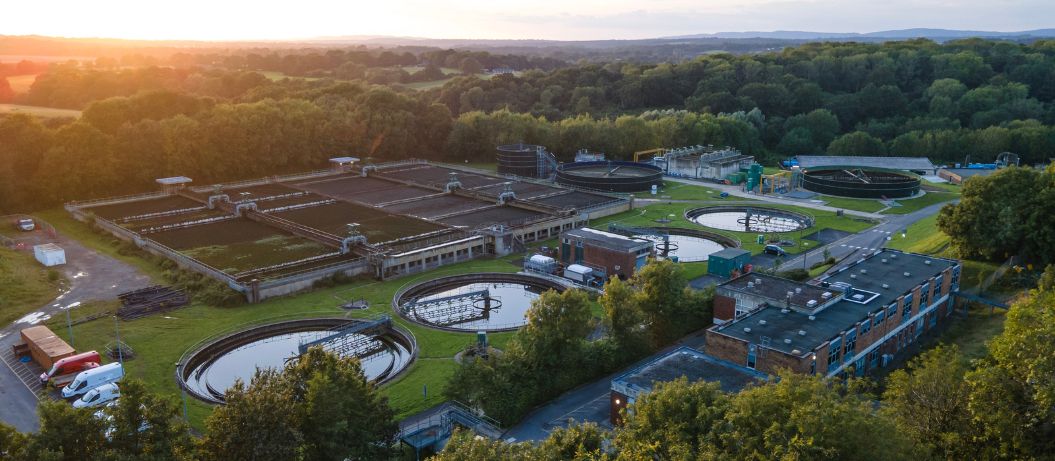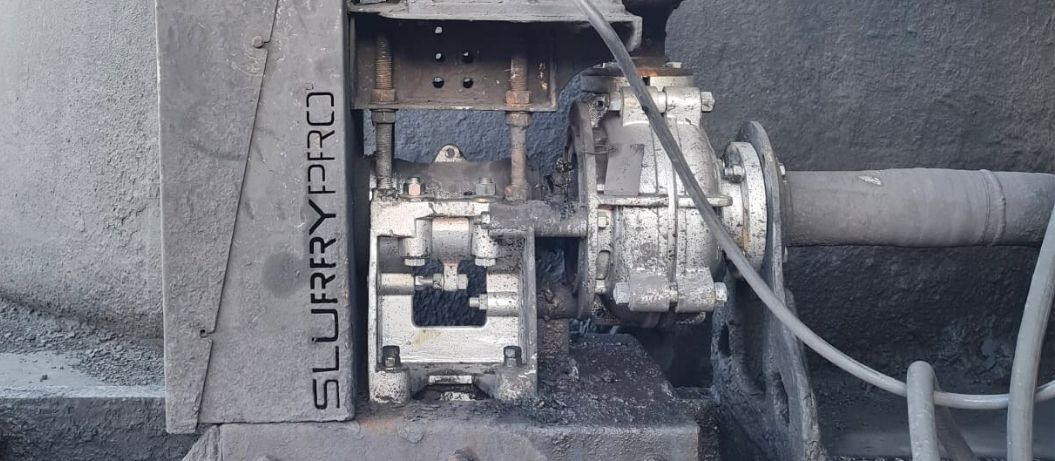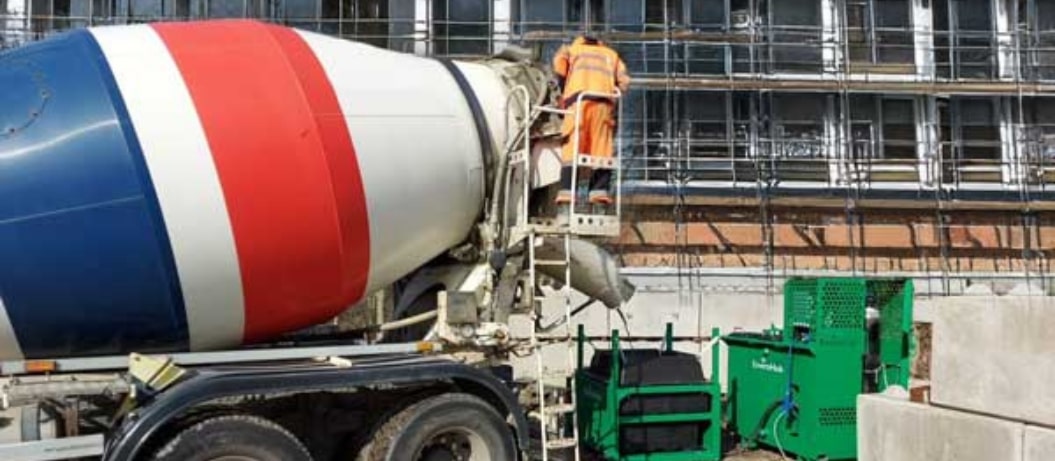The conclusion of AMP7 marked a pivotal moment for the UK water industry. While significant achievements have been made during the 2020-2025 years, this regulatory period was also characterised by substantial challenges for the sector. Particularly so in areas such as budget management, technological advancement, innovation, and stakeholder communication.
As we enter the AMP8 phase, it’s essential for the water industry to reflect on AMP7 and chart a forward-looking strategy that builds on its successes and implements learnings, while addressing the fresh challenges set by AMP8. In this article, we explore the key takeaways from AMP7 and outline actionable strategies to help ensure your success in AMP8.
Ofwat Asset Management Periods (AMPs) and why they matter
AMP7 and AMP8 are the primary regulatory frameworks affecting the UK water industry, each spanning five years and overseen by Ofwat, the economic regulator for water services in England and Wales. Here’s a brief overview:
AMP7 (2020-2025)
AMP7 focused on customer engagement, financial performance, and innovation, introducing measures like the TOTEX approach (total expenditure), D-MeX (developer services measure of experience), and Ofwat’s Innovation Fund. The goal was to leverage IT advancements and innovation to enhance efficiency, customer service, and environmental sustainability.
AMP8 (2025-2030)
The present cycle to 2030 builds on AMP7, with a stronger emphasis on resilience and sustainability. Key objectives include addressing climate change, achieving net-zero emissions by 2050, reducing sewage spills, and improving discharge water quality. AMP8 will entail significant investment in infrastructure and proven technologies to meet these goals, while balancing this with operational (OPEX) efficiency and innovation (DEVEX).
What’s Up With Ofwat?
Frustration among the public and political parties with the perceived lack of progress has led to an ambitious plan to abolish Ofwat rather than reform it. It is, of course, easier to project everyone’s wishes onto a new super quango – rather like ditching a troubled marriage instead of working through the root issues. Swapping the well-known for the novel, ministers can superimpose everyone’s idea of perfection onto this entirely new entity. So, let’s reach for our rose-coloured specs and see what happens.
Meanwhile, our day job continues: improving outcomes through better communication, aligning goals and expectations, clarifying roles and accountability, and trialling new methods and approaches to solving the issues we face.
What can the water sector learn from AMP7?
AMP7 presented a unique combination of challenges and opportunities for the water sector. Water companies were tasked with delivering critical infrastructure improvements while staying within budget and meeting tough environmental and customer performance targets.
Despite these hurdles, there were several notable achievements made during this period, for instance:
- Improved water quality standards across the UK.
- Enhanced network resilience to better withstand extreme weather events and increased demand.
- The adoption of innovative technologies like real-time data monitoring and energy-efficient systems.
- Flexibility between budgets. With the shift from segregated OPEX and CAPEX budgets to a combined TOTEX approach, water companies and contractors have been able to maximise their resources for better outcomes.
These successes demonstrate that progress is possible even under challenging circumstances. However, AMP7 also highlighted areas where further improvement is needed to maximise the effectiveness of upcoming water industry initiatives.
Addressing the challenges from AMP7
Budget overruns:
Budget overruns were one of the most pressing issues throughout AMP7. Extensive projects frequently exceeded their budgets due to several contributing factors:
Underestimation of project complexity led to unforeseen challenges, especially in large-scale infrastructure works, both construction-related and IT systems.
Unforeseen ground conditions increased the scope and costs of certain projects.
Rising material and labour costs strained budgets, often compounded by delays in project delivery. Longer-term projects need to better forecast for inflation and availability of resources.
For example, some water companies faced difficulties balancing their planned improvements with these unanticipated financial burdens. The result was not only strained budgets but also delays in other critical projects, potentially compromising service delivery and customer satisfaction.
Communication barriers:
Stakeholder collaboration is often the backbone of successful project delivery, yet communication was another recurrent problem during AMP7. Poor coordination between water companies, contractors, regulators, and customers led to:
- Misunderstandings about project goals and constraints.
- Delays stem from insufficient clarity on timelines and responsibilities.
- Inefficiencies, caused by the lack of a shared understanding among key groups.
This failure to foster strong collaboration weakened the execution of some projects and created friction between stakeholders.
Outdated technology:
While some progress was made in adopting modern methods, reliance on outdated technology and traditional supply chains remained a major barrier during AMP7. Many water companies missed opportunities to fully optimise operations through tools such as:
- Digital twins for real-time asset management simulations.
- Knowledge exchange with parallel industries and new entrants. Existing frameworks encourage like-for-like replacement, rather than enhancements and cross-pollination from wider supply chains.
- Advanced data analytics for predictive maintenance and smarter resource allocation.
- Automation to streamline labour-intensive processes.
These technological gaps and an inward-looking tendency not only hindered efficiency but also limited the ability of water companies to respond dynamically to evolving challenges, such as climate change and customer demand.
How can we learn from these challenges to increase success during AMP8?
The transition to AMP8 provides a renewed opportunity for water companies to adopt more forward-thinking strategies. By learning from the obstacles faced during AMP7, the following approaches can help drive progress in the new period.
1. Embrace Innovation
The water AMP8 era calls for adopting cutting-edge technologies to enhance operations and service delivery. Water companies should focus on innovations such as digital twins, which allow for simulating and optimising resources before making costly real-time decisions, and smart networks to provide real-time insight into water usage, leakage, and pipeline performance.
These tools could not only improve efficiency but also reduce costs and environmental impacts, making them an essential part of any forward-looking AMP8 water company strategy.
Where TOTEX shifted the focus away from meeting Capex budgets to improving overall efficiency over the 5-year cycle, less attention was given to developing the network capability through innovation. AMP7 introduced Innovation to the key performance indicators (KPIs) for the first time, and it is something that doesn’t come naturally to the industry. OFWAT’s innovation fund has doubled in AMP8, reflecting the growing importance of innovation.
2. Enhance collaboration with stakeholders
Building stronger relationships with contractors, regulators, and customers will be the key to delivering successful AMP8 outcomes. Water companies can foster collaboration by:
- Establishing clear communication protocols that promote greater transparency.
- Hosting stakeholder alignment meetings early in project lifecycles to agree on goals, constraints, and timelines.
- Investing in platforms for real-time coordination, reducing misunderstandings and inefficiencies.
A united approach among stakeholders not only facilitates smoother project delivery but also fosters trust and improved outcomes.
3. Implement effective customer engagement
Customers increasingly expect transparent communication and active inclusion in decision-making. Water companies should engage their customer base by providing clear, accessible information about upcoming projects and their impacts, actively seeking customer feedback through consultations, surveys, and dedicated communication channels. They should also give customers a greater voice in planning and strategy, ensuring their needs are integrated into decision-making processes. Meeting customer expectations in AMP8 will help water companies gain public support and contribute to long-term success.
4. Proactively manage budgets
To mitigate budget overruns in AMP8, water companies must refine their financial planning processes. This could include performing rigorous feasibility studies to better estimate costs and scope, establishing contingency budgets to account for unforeseen events, and tracking spending rigorously, using real-time data tools to monitor budget adherence and flag issues early.
5. Prioritise sustainability goals
Climate change and environmental concerns are central to AMP8. Water companies must, therefore, prioritise initiatives that align with strict sustainability targets, including:
- Reducing carbon emissions by switching to low-energy processors and systems.
- Promoting nature-based solutions, such as constructed wetlands, for water management.
- Implementing recycling and reuse programmes to make better use of available water resources.
What next?
AMP8 represents a critical opportunity for the UK water industry to stand out as a global leader in innovation, collaboration, and sustainable service delivery. The decisions made now will shape the future of the water AMP8 industry, so to find out more and discover how Atlantic Pumps can support you, please contact us today.
Find out more
Want to learn more about pumping sludge and grit?
Download our free guide now to gain insight on contaminant management and pump solutions tailored to sludge treatment
We also take a sustainable approach to our work and are committed to reducing energy waste from pumps. Our expert knowledge allows us to reduce energy usage by 20% on the average site!
Call us today on 0808 196 5108 for more information.
 September 24 2025
September 24 2025 7 min read
7 min read


